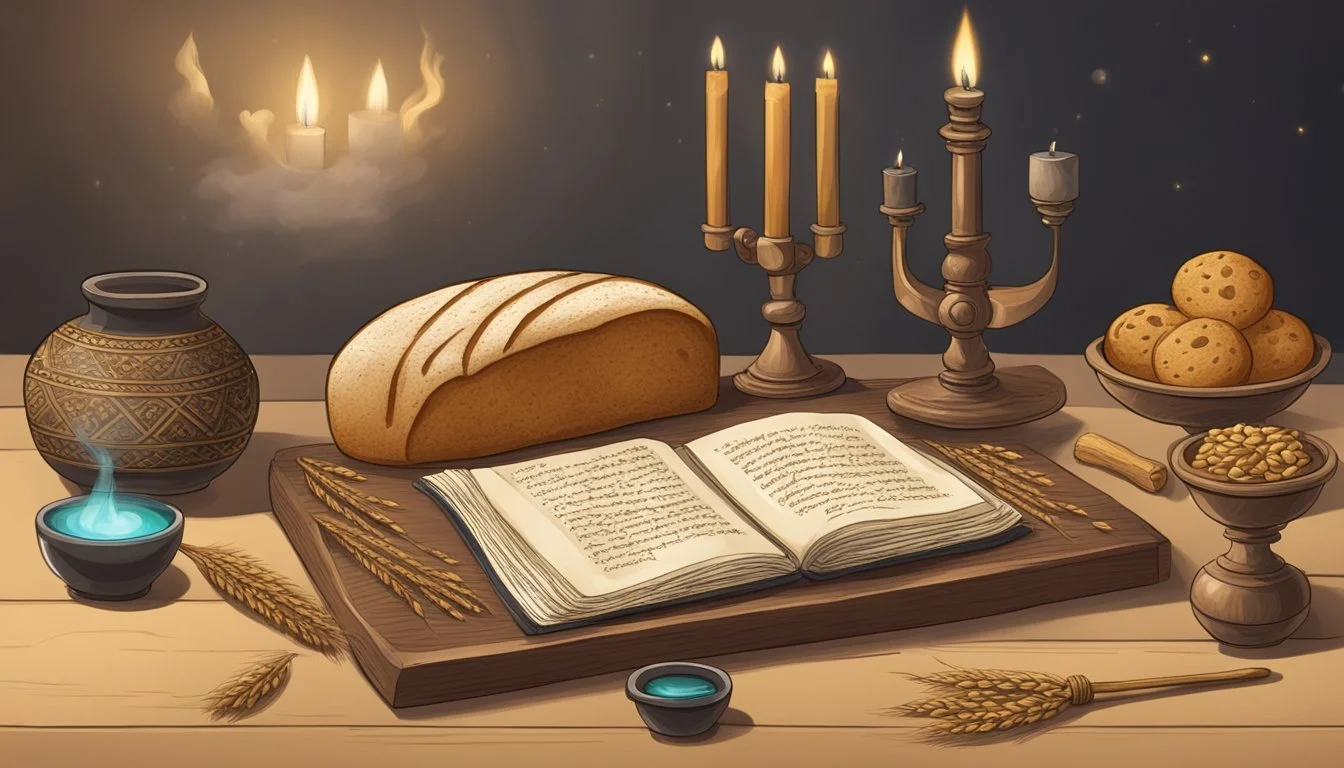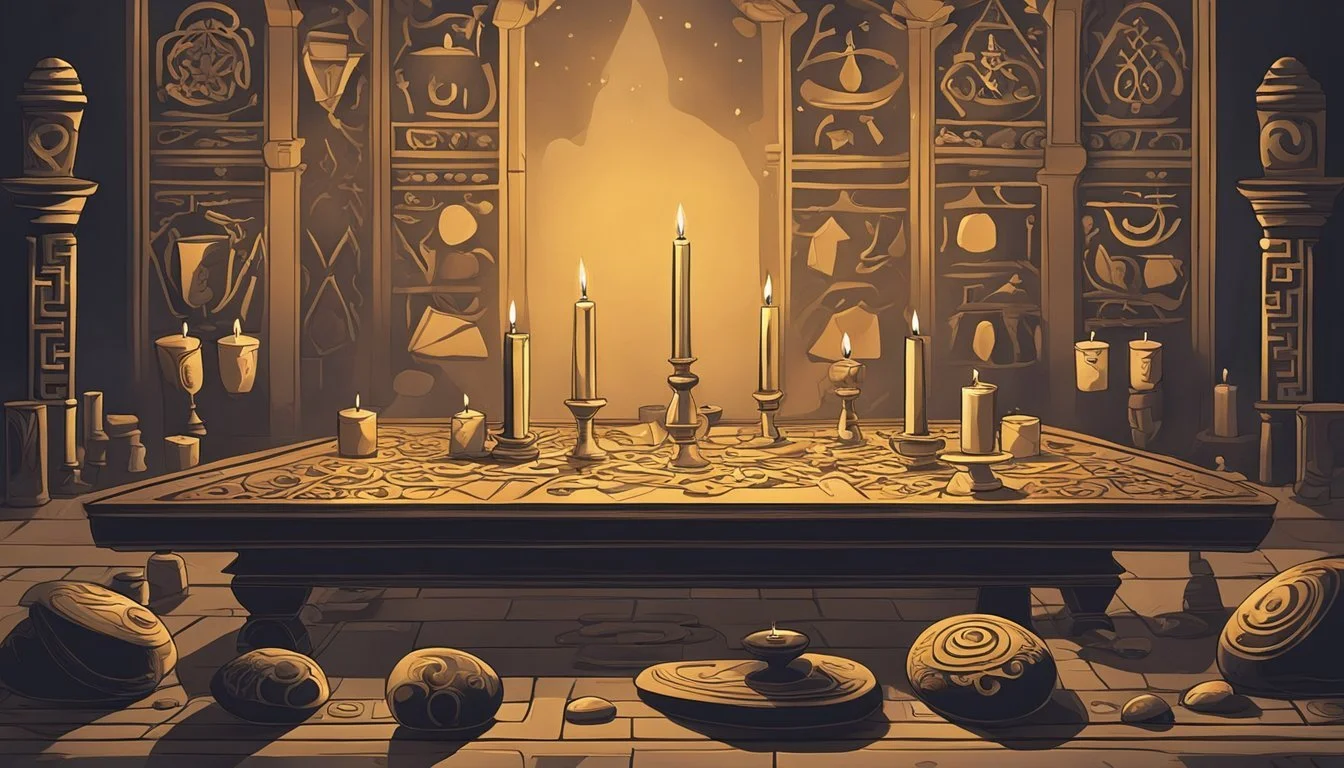5 Ancient Divination Methods You've Never Heard Of
Obscure Practices from the Past
Ancient civilizations relied on various methods of divination to gain insight into the future and understand the will of the gods. While some practices like astrology and tarot remain popular today, many lesser-known techniques have faded into obscurity over time. These forgotten divination methods offer a fascinating glimpse into the spiritual beliefs and cultural practices of our ancestors.
Exploring obscure forms of divination can shed light on how different societies approached the supernatural and sought guidance for important decisions. From reading animal entrails to interpreting the patterns of thrown bones, these ancient practices reflect humanity's enduring desire to peer beyond the veil of the present and uncover hidden truths about the world around us.
1) Augury
Augury was an ancient divination practice that involved interpreting the will of the gods through observing birds. This method originated with the Etruscans and was later adopted by the Romans.
Practitioners known as augurs would carefully watch the flight patterns, behavior, and sounds of birds to gain insights into future events or divine approval for important decisions. The practice played a significant role in Roman religious and political life.
Augurs held esteemed positions in Roman society and were consulted before major undertakings such as battles or the founding of cities. They would create a sacred space called a templum from which to conduct their observations.
Different species of birds held varying significance in augury. For example, eagles and vultures were considered particularly important omens. The direction of flight, the number of birds seen, and their actions were all factored into the interpretation.
While augury was primarily associated with birds, it sometimes included observing other natural phenomena such as lightning or the behavior of animals. The practice remained influential throughout the Roman period, shaping policy and guiding leaders in their decision-making processes.
2) Oenomancy
Oenomancy, also known as oinomancy or wine scrying, is an ancient divination technique that uses wine to predict the future. This lesser-known practice involves observing patterns formed by wine in a vessel or on a surface.
The method dates back to ancient times, with roots in Greek and Roman cultures. Priestesses called Bacchantes performed oenomancy under the protection of Bacchus, the Roman god of wine.
Practitioners pour wine into a bowl or onto a flat surface and interpret the resulting shapes, ripples, and reflections. The color, movement, and bubbles in the wine may also hold significance for divination.
While not as common as other forms of divination, oenomancy is still practiced today. It shares similarities with other scrying methods, such as hydromancy (water divination) and catoptromancy (mirror divination).
Oenomancy offers a unique approach to divination, combining the mystical properties of wine with the art of interpretation. Its enduring presence demonstrates the human fascination with finding meaning in everyday objects and substances.
3) Axinomancy
Axinomancy is an ancient divination method that uses an axe or hatchet to gain insights into the future or uncover hidden knowledge. This obscure practice has roots in various cultures, including ancient Greece and some northern countries.
One common technique involves placing a heated agate stone on the blade of a red-hot axe. Diviners interpret the stone's movements to identify culprits in criminal cases or answer other pressing questions.
Another approach requires balancing an axe on an upright stake. As the names of suspects are spoken aloud, the axe's movements are believed to indicate guilt or innocence.
Some practitioners throw the axe into the ground or swing it into a tree. They then analyze the direction of the handle or the quivering of the blade to derive meaning.
Axinomancy has been referenced in religious texts, including the Bible. Psalm 74 mentions diviners using this method to predict the fall of Jerusalem.
While not widely practiced today, axinomancy remains an intriguing example of humanity's diverse attempts to glimpse the future and uncover hidden truths throughout history.
4) Belomancy
Belomancy is an ancient divination practice that uses arrows to predict the future or gain insight into important decisions. This method was employed by various cultures, including the Babylonians, Greeks, Arabs, and Scythians.
Practitioners of belomancy would typically use a set of arrows marked with symbols or inscriptions. These arrows were then shot or thrown to interpret their landing patterns and positions.
One common approach involved using three arrows. Two would be marked with opposing outcomes, such as "yes" and "no" or "God orders it" and "God forbids it," while the third arrow remained blank.
The diviner would shoot or throw these arrows, and the one that traveled the farthest was believed to reveal the answer or divine guidance. This technique was used to make important decisions and seek answers to pressing questions.
Belomancy's name derives from the Greek words "belos," meaning arrow or dart, and "manteia," meaning divination. This practice highlights the creative ways ancient cultures sought to understand and predict the future.
5) Lithomancy
Lithomancy is an ancient divination practice that uses stones to gain insights into the past, present, and future. This method has roots dating back to at least 3000 BC, with origins believed to be in India or Persia.
Various cultures throughout history have employed lithomancy, including the ancient Egyptians, Greeks, and Romans. The practice involves interpreting omens or foretelling events through the casting or selection of stones.
There are different approaches to lithomancy. Some practitioners use a set of 13 stones, tossing them onto a board for interpretation. Others may employ smaller sets of two or three stones for more focused readings.
Lithomancy shares similarities with other divinatory practices like reading runes, tarot cards, or tea leaves. The stones used can vary, ranging from common pebbles to precious gems or crystals.
One notable historical account mentions a physician named Eusebius who used a special stone called a baetulus for divination purposes. This highlights the diverse applications of lithomancy across different time periods and cultures.
Historical Context and Origins
Divination practices have roots stretching back thousands of years across many ancient civilizations. These techniques emerged as ways for people to seek guidance and interpret the will of the gods.
Cultural Significance
Divination held immense importance in ancient societies. It provided a means to understand the divine and navigate uncertain futures. In Mesopotamia, astrology was a primary form of divination. Babylonians viewed celestial bodies as divine representations.
Jupiter was associated with Marduk, while Venus was linked to Ishtar. These connections between planets and deities shaped religious beliefs and decision-making processes.
Ancient Greeks also relied heavily on divination. One unique method involved whispering questions to statues of Hermes. People would then cover their ears and interpret the first words they heard as answers.
Early Practices and Locations
Scrying, one of the oldest divination methods, was practiced across numerous ancient cultures. Egyptians used ink for scrying, while Mesopotamians employed oil-filled bowls. Greeks found meaning in reflections on mirrors and metals.
Mesopotamia, often called the cradle of civilization, recorded some of the earliest known divination practices. These rituals were used to predict battle outcomes and forecast agricultural yields.
Ancient Babylonians developed complex systems of celestial divination. They divided the sky into "mansions" associated with gods like Anu, Enlil, and Ea. This cosmic geography formed the basis for interpreting celestial events and omens.
Common Features in Ancient Divination
Ancient divination methods shared key elements across cultures, reflecting common human desires to understand the unknown. These practices incorporated symbolic systems and ritualistic components to bridge the mundane and spiritual realms.
Symbolism and Interpretations
Symbolism played a crucial role in ancient divination techniques. Practitioners used objects, natural phenomena, or abstract concepts as conduits for divine messages. In scrying, reflective surfaces like water or crystals served as gateways to otherworldly insights.
Tarot cards employed rich imagery to convey meanings. Each card represented specific ideas or archetypes, allowing readers to construct narratives from their arrangements.
Runes, ancient alphabetic symbols, carried individual meanings. Diviners interpreted their patterns when cast, decoding messages from the gods.
Numerology often factored into divination practices. Certain numbers held special significance, influencing interpretations across various methods.
Rituals and Ceremonies
Rituals formed the backbone of ancient divination practices. These ceremonies created sacred spaces and mindsets for connecting with divine forces.
Purification rites commonly preceded divination sessions. Practitioners might fast, bathe, or burn incense to prepare themselves and their surroundings.
Invocations to deities or spirits were standard. These verbal or physical acts sought permission and guidance from higher powers.
Timing played a significant role. Many cultures believed certain days or astronomical alignments enhanced divinatory powers.
Specific tools and environments were often required. Oracle bones in ancient China needed precise preparation, while the Greeks consulted the Delphic Oracle in a specially designated temple.
Influence on Modern Practices
Ancient divination methods continue to shape contemporary spiritual practices and beliefs. Their enduring appeal lies in their ability to adapt to modern sensibilities while retaining their mystical allure.
Adaptation in Contemporary Culture
Tarot card reading has gained widespread popularity, with decks featuring diverse artistic styles and themes. Many people use tarot for self-reflection and personal growth rather than strictly predictive purposes.
Astrology has evolved into a mainstream cultural phenomenon. Horoscopes appear in magazines and social media, while astrology apps offer personalized insights based on birth charts.
Numerology has found new applications in areas like career counseling and personal development. Some life coaches incorporate numerological principles into their practice.
Impact on Modern Metaphysical Beliefs
The concept of energy reading, inspired by ancient scrying techniques, has become a cornerstone of many New Age philosophies. Practitioners claim to interpret auras and chakras to gain insights into a person's well-being.
Crystal healing, rooted in ancient lithomancy, has experienced a resurgence. Proponents believe different crystals possess unique energetic properties that can influence physical and emotional health.
Modern psychics often blend traditional divination methods with contemporary psychological techniques. This fusion aims to provide a more holistic approach to spiritual guidance and personal empowerment.







